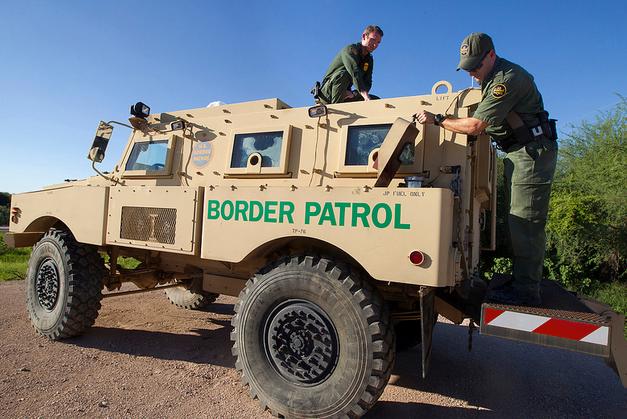Ed note. I’m pleased to welcome Adam Lichtenheld to UN Dispatch. Adam is a PhD student at the University of California, Berkeley, whose research focuses on forced migration, civil war, and peace building. He has worked as a USAID consultant on political transitions and post-conflict development in Libya, Iraq, Afghanistan, and South Sudan. He is also a former freelance journalist for National Geographic and other publications, and a former Herbert Scoville, Jr. Fellow on U.S. foreign policy.
The migration surge along the U.S. border has come under intense political and public scrutiny. A precipitous increase in the number of people crossing into the U.S. from Central America this year, including some 50,000 minors, has prompted the Obama Administration to request $1.4 billion in emergency funding. While the president has underscored the “urgency” of the humanitarian situation, policymakers and commentators continue to classify the influx of migrants as everything but what it appears to be: a refugee crisis.
And it is not a new one. No region in the world is plagued by more organized crime-related violence than Central America. Gang warfare and forced recruitment in Mexico, El Salvador, Guatemala and Honduras have been primary drivers of migration for at least the past half-decade. Beth Ferris of the Brookings Institution has written that Central American drug cartels closely resemble rebel groups, making the violence they unleash akin to that of a low-level insurgency. While public attention has focused on the plight of unaccompanied children, single women also comprise a significant proportion of the displaced. Thus the profiles of these migrant populations — mostly women and children forced to flee conflict-ridden countries for fear of persecution — are more consistent with a traditional refugee situation than the voluntary cross-border movements to which the U.S. is accustomed.
Yet the discussion over how to address this crisis is embroiled in the U.S.’s contentious debate over immigration, with the chief focus on the Obama Administration’s policy response. But what about the role of the international community? UNHCR is charged with providing humanitarian assistance and protection to refugee communities, including emergency shelter, which hasbecome a dire problem facing the overstretched U.S. Office of Refugee Resettlement. While UNHCR is far from silent on the issue, its 2014 and 2015 budgets for operations in North and Central America pale in comparison to its funding allocations for managing refugee flows in West, Central, and East Africa, the Middle East, and Eastern Europe. The situation south of the U.S. border is certainly not to the scale of the crises affecting these other regions. But it still warrants greater engagement from, and burden-sharing with, international humanitarian agencies.
Such involvement is critical both for supplying humanitarian aid and processing requests for asylum. Like most refugees, those seeking sanctuary in the U.S. are arriving as part of mixed migration movements, which encompass those who qualify for international protection under the 1951 Refugee Convention, and those who do not. The U.S. asylum process is cumbersome, and proving a well-founded fear of persecution is more difficult when the threat stems from opportunistic gangs rather than oppressive governments. But international assistance may be the only hope for screening migrants quickly and fairly, and protecting individuals for whom deportation would be a death sentence.
Due to its geographic isolation, the U.S. has rarely had to contend with the challenges of being a country of first asylum. The current crisis is changing that. Washington now joins governments throughout Europe, the Middle East, sub-Saharan Africa and Asia that have been forced to grapple with the regional consequences of domestic conflict and instability. While the U.S. is the primary destination for Central American refugees, these migrations have overwhelmed other countries throughout the region. Since 2009, for example, applications for asylum in Mexico, Panama, Nicaragua, and Costa Rica have skyrocketed by 432 percent.
As the world observes World Refugee Day, it faces the highest number of people forcibly displaced by violent conflict — roughly 51 million — since World War II. The recent uptick in armed conflicts globally, coupled with growing urbanization in conflict-affected countries, forecasts further displacement. While addressing forced migration is critically linked to the immigration policies of individual countries, the scale of the problem requires a collective effort coordinated by international actors. The situation along the U.S. border is no different.
